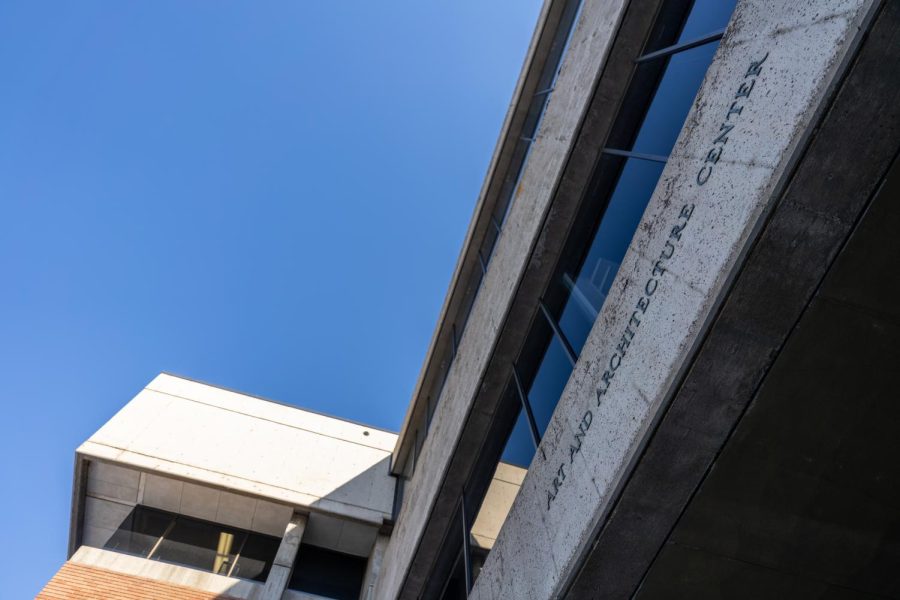U Students Help Refugee Resettlement Through VR
The Art and Art History Building on the Univeristy of Utah campus in Salt Lake City on Jan. 31, 2023. (Photo by Xiangyao “Axe” Tang | The Daily Utah Chronicle)
February 16, 2023
A team of University of Utah students, with the help of Milad Mozari, assistant professor in the college of architecture, have been working to tackle resettlement barriers refugees face through the use of VR.
The project, called Bridging the Gap, provides VR training that teaches refugees how to perform basic everyday tasks out in the world, and shows them how to interact with their environment in a safe and comfortable way, according to Sam Bari, a junior majoring in business at the U who is part of the team.
“Part of the training is, they take them to a hospital, they take them on a bus, how to pay on the bus, how to pay out a cashier, self-checkout, grocery stores and such,” Bari said. “They can learn without actually interacting with other humans.”
Each month, Utah welcomes somewhere between 30 to 50 refugees to the state from countries around the world, according to Universe Narratives. The language barriers these refugees face can make it extremely difficult for them to interact with their peers and can cause them to miss out on many educational and job opportunities.
Campeon Ramirez, a senior in the team studying multi-disciplinary design, said the goal of the VR technology is to address resettlement and digital literacy issues refugees in Salt Lake City experience.
“The education system and the workforce is becoming very digital very quickly,” Ramirez said. “I think it’s super important to just introduce clients to that technology.”
According to Ramirez, the refugees who come to Salt Lake City must attend a mandatory orientation held by the International Rescue Committee upon their arrival. This is how the program finds many of its clients. At this orientation, Ramirez said that the program will present its VR segment and that much of the project ”has been a really big collaboration working back and forth between the International Rescue Committee.”
Bari said using VR in this context makes sense because of how prevalent VR training became during the COVID-19 pandemic.
“[During COVID] It was very difficult to provide training for the new refugees of the IRC,” Bari said. “I was like why can’t we just provide the training at home where they can use their own phones?”
This VR technology does take some getting used to for those who aren’t familiar with it, said Ramirez, but the technology is very user-friendly and easy to adapt to.
“A lot of the clients are kind of new to technology,” Ramirez said. “There’s a language barrier plus a digital literacy barrier that you have to kind of cross. The more we practice introducing it to clients, the better we get at getting them to use it.”
Since beginning this training, Bari said many of the refugees involved in the program enjoy the VR exercises and find them helpful.
“It’s about making them more comfortable with the new environment, and we had a lot of positive feedback, especially from younger people, younger students who tried the project, who tried the headsets that the U provided for us,” Bari said.
In the future, Bari hopes to expand the program’s operations on a larger scale, reaching refugees nationally and globally. As a former refugee himself, Bari understands the struggles they are going through and wants the resettlement process to be as easy as possible for them.
“As a former refugee, it was very difficult for me to navigate my own town,” Bari said. “It’s a cultural shock. So I think VR may help bridge the gap and help us provide a tool for those who need it.”









